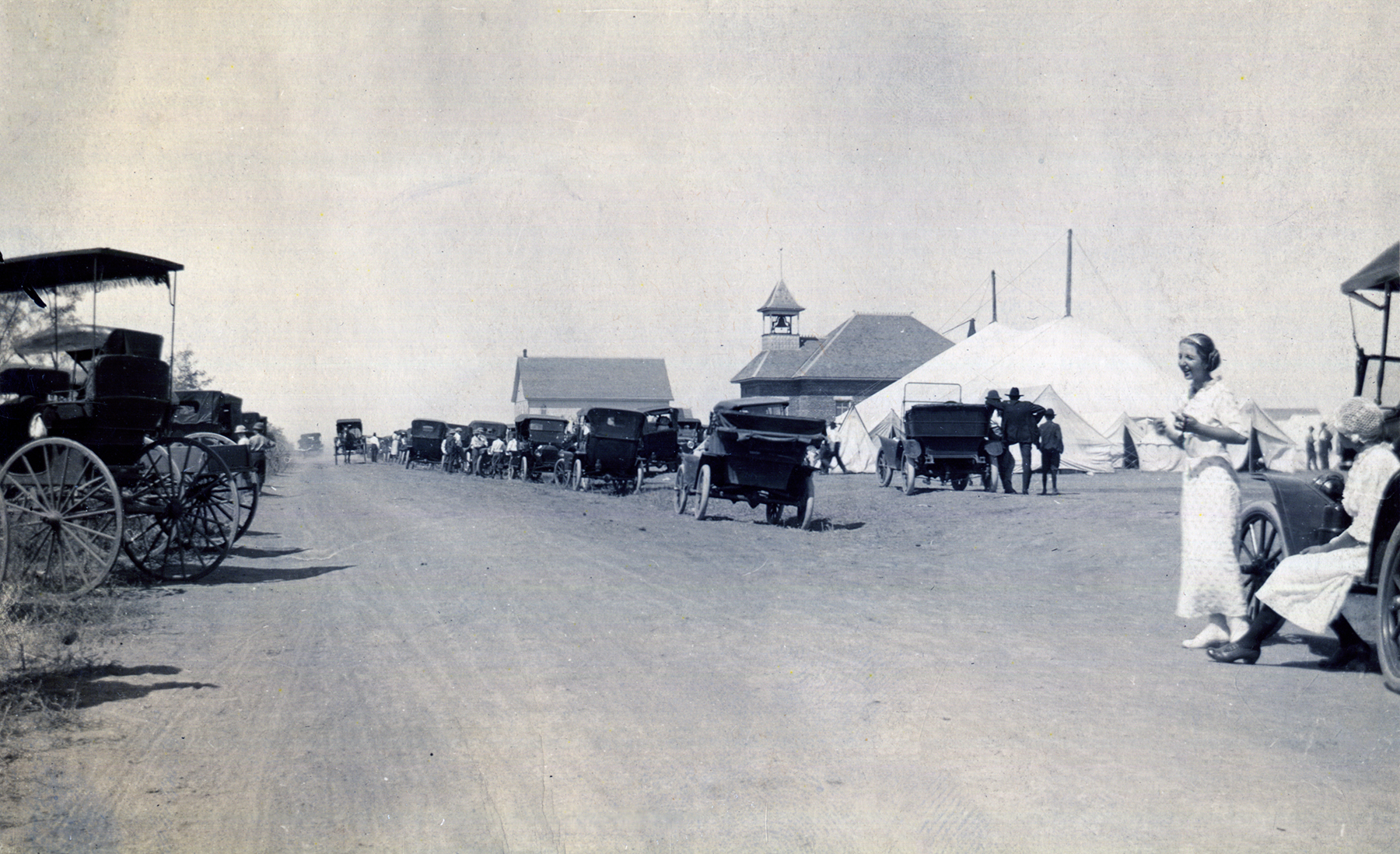MENO.
Located in northeastern Major County, Meno is situated fifteen miles west of Enid on U.S. Highway 412. Settled after the Cherokee Outlet Opening on September 16, 1893, Meno lay within Woods County until 1907 statehood. Mennonites came to the area and organized the New Hopedale Mennonite Church. In Oklahoma Place Names historian George Shirk asserts that the town is named for Dutch theologian Menno Simons. The second "n" was dropped inadvertently when town application papers were completed by the town's founders. A post office was established on October 19, 1899, with Jacob A. Wedel serving as the first postmaster. Between 1901 and 1902 the Enid and Anadarko Railway (later the Chicago, Rock Island and Pacific Railway) built a line connecting Enid (Garfield County) and Greenfield (Blaine County) that passed through Meno.
The first federal census for Meno reported 69 inhabitants in 1910. By 1918 the agricultural trade center had a bank, a flour mill, two creameries, and two grain elevators. Population climbed to 180 in 1940 but fell to 76 in 1950. In the 1940s and 1950s the Meno Guaranty Bank as well as a grain elevator, gasoline stations, and grocery/meat markets served the community. In 1980 the population was 171. At the turn of the twenty-first century Meno, with a population of 195, served as a "bedroom" community for the 98.8 percent of those employed who commuted to work to Enid and other job centers. The 2010 census found 235 residents in the town of Meno. The April 2020 census reported 197.
See Also
Learn More
Gloss Mountain Country: A History of Major County (Fairview, Okla.: Major County Historical Society, 1977).
"Meno," Vertical File, Research Division, Oklahoma Historical Society, Oklahoma City.
Profiles of America, Vol. 2 (2d ed.; Millerton, Okla.: Grey House Publishing, 2003).
Citation
The following (as per The Chicago Manual of Style, 17th edition) is the preferred citation for articles:
Linda D. Wilson, “Meno,” The Encyclopedia of Oklahoma History and Culture, https://www.okhistory.org/publications/enc/entry?entry=ME014.
Published January 15, 2010
Last updated March 25, 2024
© Oklahoma Historical Society



